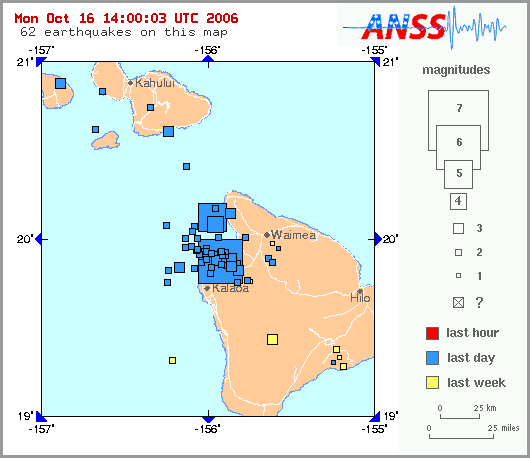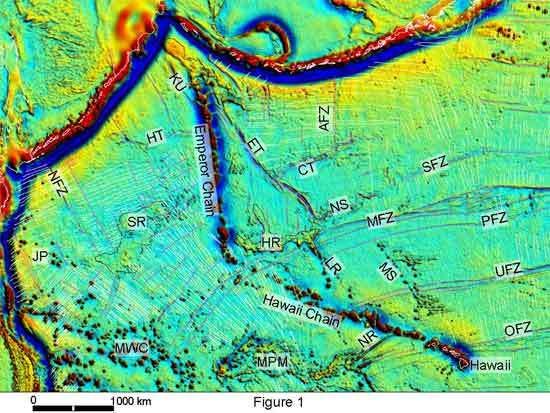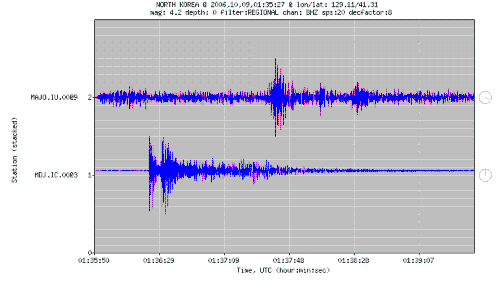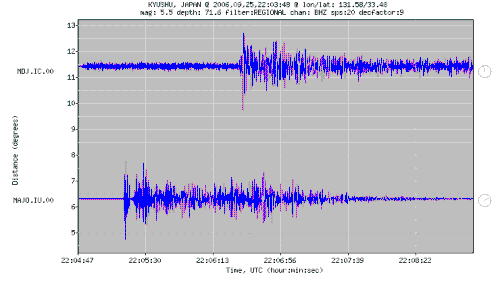I’ve been meaning to mention the report released last week by the Environmental Change Institute, which argues that the government’s policies for the expansion of air travel rather get in the way of their attempts to seriously curtail CO2 emissions (click here for pdf). However, the lack of any substantive response from the government (at least, I didn’t see one) meant that beyond agreeing that all the sound and fury about nuclear generation (or not) is beside the point if we don’t hit the other areas of our energy use – a point that I’ve made myself before – I didn’t have much to add.
However, I think another story, which has been gathering momentum in the media over the last few days, gives us all something to consider. It involves my place of work. From here:
The National Oceanography Centre in Southampton is home to a £20 million research program on the dangers of rapid climate change. It also houses the southern office of the Tyndall Centre for Climate Change Research. But while its staff are investigating the impact of carbon emissions on our climate, their bosses enjoyed a trip to America with their wives last weekend on a private jet.
Ed Hill (Director of the Centre), Andrew Roberts (Head of the University of Southampton School of Ocean and Earth Sciences) and Bill Wakeham (Vice-Chancellor of the University) flew from Southampton to North Carolina with various other hangers-on. Their private jet was provided by an American businessman that they were courting (and presumably they did not want to offend this would-be philanthropist by insisting on taking scheduled flights) [this is incorrect –see below]. As a result, their journey put several times more carbon per passenger into the upper atmosphere than using a regular airline.
Several staff that I have spoken to from the Centre who are working on the dangers of climate change feel betrayed by this affair. The "do as I say, not do as I do" example of the their bosses undermines their credibility when highlighting the need to reduce carbon emissions. It also hands ammunition to those denying climate change and suggests that the principles of those involved are for sale to anyone who offers to write a cheque.
Indymedia also has an update to this story – surprisingly, I can’t find much else online, although there is a discussion at Stoat.
In public relations terms, this is a complete own-goal, and it’s very easy to take the self-righteous line being adopted by most of the reports I’ve seen or heard about (the second Indymedia link being a good sampling of the general tone). I’m hoping some of them at least got the facts straight - the purpose of the trip was to set up a long-term
More prosaically: you have to go to Edinburgh for a couple of days next month. You look up train fares from Southampton, and find a return costs £114.00. You can fly from Southampton airport, in far less time, for £65 (I’ve just looked up these prices). Which would you choose?
In the context of this post, most people would probably plump for the more environmentally friendly options, but I’m honest enough to admit that if I didn’t think anyone was looking, I’d be sorely tempted by the option that got me there cheaper and faster. I would definitely feel bad about it at some level, but that might not stop me doing it. And herein lies the problem we face. The Environmental Change Institute’s report highlights but one facet of what is a pervasive feature of modern life: the environmentally ‘bad’ options are the easy and/or convenient and/or accepted ones. Absurd as it seems, you can get around the UK fastest and most cheaply by flying; imported vegetables in Tescos are cheaper than the ones grown locally; you can have a cheaper (and sunnier, probably) holiday by flying to Spain, or further, than you can in the UK; and, in most places, it is easier and cheaper to drive to work than get the bus. Those who try hardest to reduce their environmental impact – by not owning a car, not going abroad for their holidays - are also viewed as slight eccentrics. It is only when these circumstances, and attitudes, begin to change that we have a hope of getting a grip on our greenhouse gas problem.
Returning to the NOC story, then, the question here is not about private jets, but whether a face-to-face meeting was required in the first place. And if the current furore was not being fuelled as much by reverse snobbery and envy as real environmental concern, that is the question that people would be asking.











